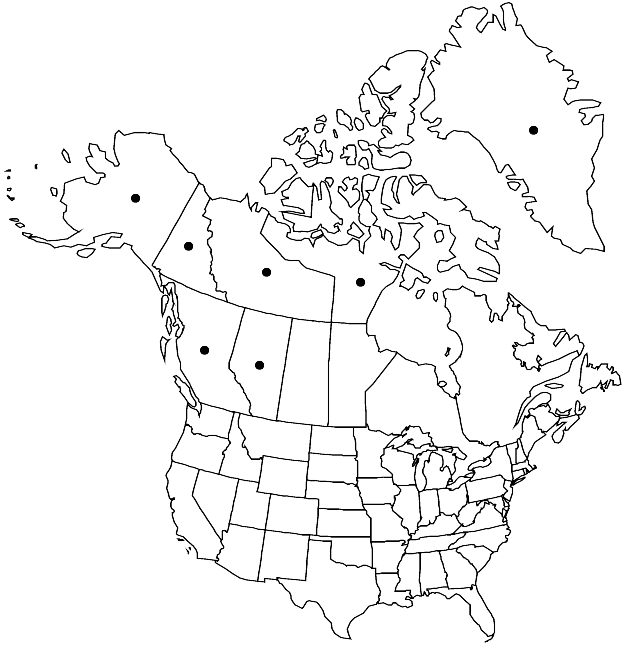Ptychostomum cryophilum
Phytologia 87: 20. 2005.
Plants in dense swelling turfs, red, red-green, or red-yellow. Stems 2–4(–6) cm, fertile stems comose, innovations evenly foliate. Leaves yellow-green to pink or red, dark red-brown with age, somewhat distant, older leaves ± imbricate, younger leaves strongly contorted to shrunken when dry, ovate, strongly concave, 0.5–3 mm, not much enlarged toward stem apex; base green, weakly decurrent; margins plane or weakly revolute in proximal 1/4, limbidium strong, in 2 or 3 rows; apex obtuse; costa percurrent or sometimes not reaching apex, apiculus absent; proximal laminal cells rectangular, 3–4:1; medial and distal cells irregular, 15–22(–25) µm wide, 2–3:1, walls thin. Specialized asexual reproduction absent. Sexual condition dioicous. Seta red, 2–4 cm, slender, straight to somewhat flexuose. Capsule yellow-brown to brown, ovate to obovate, symmetric, 2–4 mm, mouth yellow-brown; operculum conic, weakly apiculate; peristome well developed; exostome teeth yellow-brown, lamellae straight, pores absent near base along mid line; endostome not adherent to exostome, basal membrane 1/2–2/3 exostome height, segments with ovate perforations, cilia long, appendiculate. Spores 16–20 µm, pale yellow.
Phenology: Capsules mature Jul–Aug.
Habitat: Wet soil, rock in streams, wetlands, late melting snow beds
Elevation: low to high elevations (0-2000 m)
Distribution

Greenland, Alta., B.C., N.W.T., Nunavut, Yukon, Alaska, Eurasia (arctic regions, India, Mongolia, Nepal).
Discussion
Ptychostomum cryophilum is distinguished by the densely compact red turfs, ovate concave leaves, and weak costae. The costae are red; the proximal laminal cells are narrower than the more distal cells.
Selected References
None.